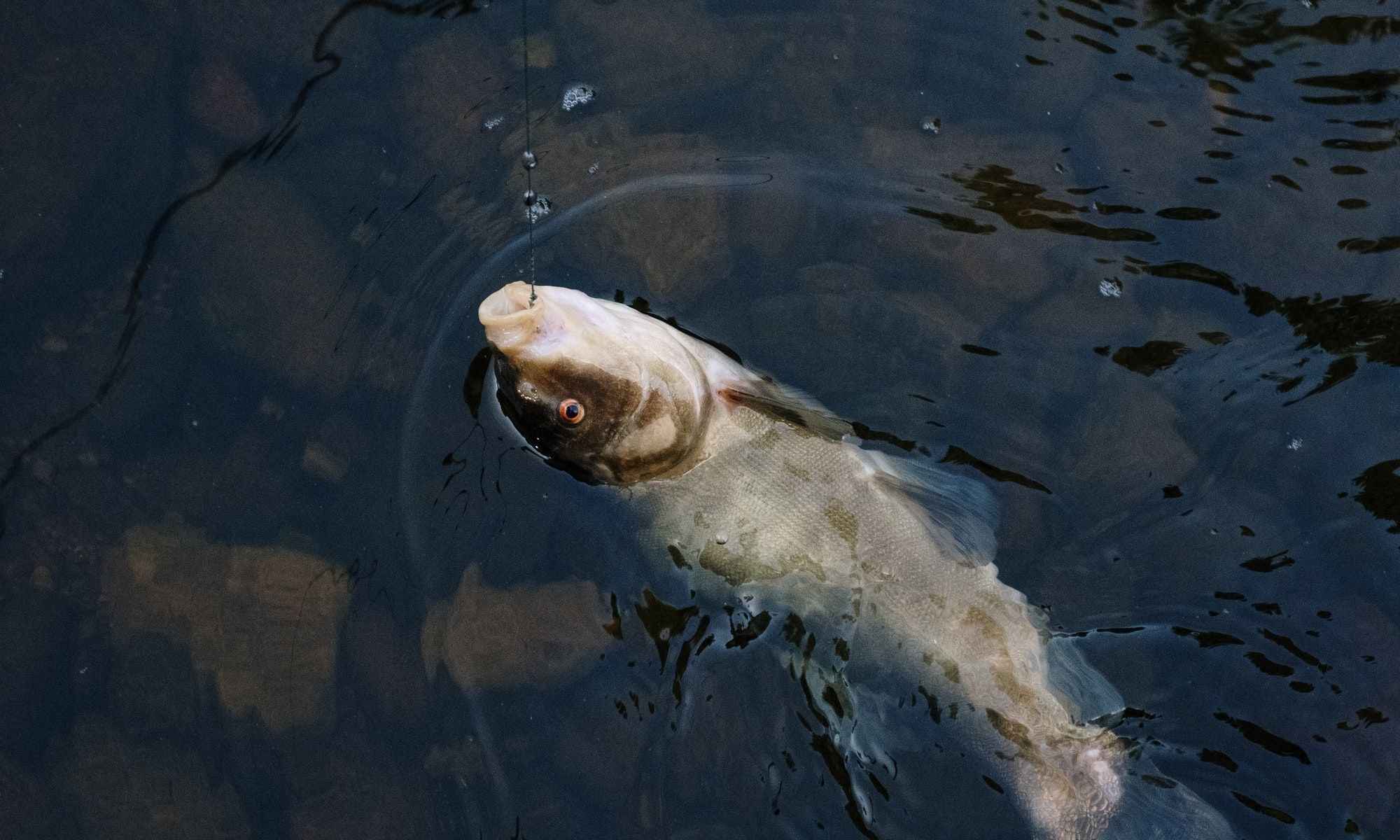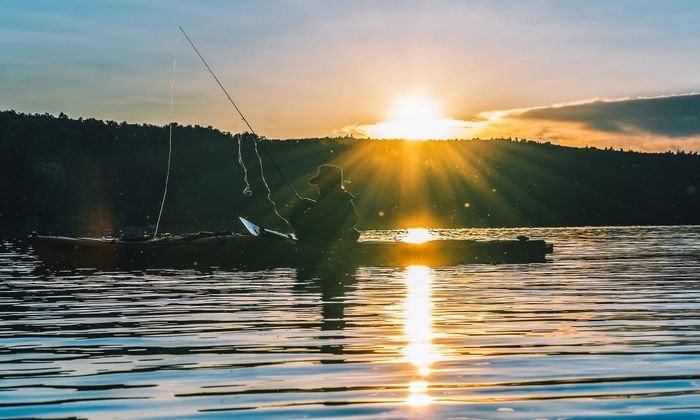7 Best Lures for River Smallmouths
Here are the best lures if you want to catch smallmouth bass in rivers.

It’s no surprise that many anglers would consider river smallmouths the greatest freshwater gamefish as they have a reputation for being the hardest fighters but are still fun to chase. Bass anglers can hook dozens of the fish in a river in a day once they figure out their pattern. A majority of anglers opt to use artificial lures despite live bait producing plenty of fish. But you don’t have to bring massive tackle boxes to effectively catch smallmouth bass in rivers, as long as you select the right lures. Below, we will list seven lures that will get you set on catching the fish from summer through fall and will cover all the levels of the water column - top, middle, and bottom. But before that, here’s where smallmouth bass are best found in rivers and how they forage.
Where to Find Smallmouths in Rivers

While you can score smallmouths (also known as bronzebacks) just about anywhere on some days, you will have a better chance of finding them, even in bigger sizes, in the following areas:
- Natural structures such as fallen trees, stumps, rock piles, and boulders
- Man-made structures such as docks, piers, bridge pilings, and ripraps
- Vertical or undercut banks
- Edges of weed beds or other vegetation
- Ledges and points
- Runs, riffles, and eddies
- Where damselflies and minnows are skipping across the water’s surface
- Where crayfish can be found as it’s an important part of their diet
- Pools below dams and deep holes
How the Fish Feed
Despite the fish having smaller mouths than the largemouth bass, it doesn’t stop them from targeting and eating larger forage. As the fish grow older, they can turn from eating insects to larger prey as the availability of forage increases the size and scope of their diet. The fish are opportunistic feeders and are not very selective so that they won’t ignore bait because of the size. Starting out by using large baits could be an advantage as it will help you determine if downsizing would yield you better results while covering all offering possibilities. Smallmouth bass like to be in places that let them ambush their targets as the current of the river brings it to them, but at the same time will not let them have a hard time fighting the flow of the water.

7 Best Lures for Smallmouth Bass
1. Topwater Plug
The best choice among these aggressive and visual lures is a model with either one or two propellers that spray the water when you twitch it. Topwater plugs will easily catch the smallmouth’s attention as they would look like something alive and appetizing to them. Furthermore, look for something that is two to three inches long in either silver, fire tiger, frog, yellow, chartreuse, or black in color. Popular products for this option are the Heddon Tiny Torpedo, the Jitterbug for a wobbler, and the Rebel Pop-R for a small popper.
To use topwater plugs, poppers, or prop lures to catch smallmouths in a river, toss it to your chosen area and let the ripples of the water settle. Twitch it once, wait for a minute, and then repeat. Retrieve the lure back at a speedier pace, experimenting with both smooth and erratic presentations. For wobblers, it’s best to reel them in steadily and slowly, so they chug along and sputter across the surface. They are great lures to use for night fishing while prodding at deep and slow pools.
2. Thin-Minnow Lure
The skinny plug offering is ideal when you’re trying to fish in between the top and middle depths of the water column. As a topwater lure, you can twitch it or do a slow crawl of it across the water’s surface. To fish in mid-levels, steadily reel it or work it at a fluctuating rate to entice fish through both levels of the column. Models that are two to four and a half inches are your best bet when you opt for this type of lure. You can also bring out a five-inch one when there are bigger fish. The best color options are silver, gold, blue, chartreuse, and orange. The Original Floating Rapala is a classic model amongst anglers.
To use the thin-minnow lure, try presenting them subtly as topwater lures at first. Lightly twitch it, wait, and then reel it back slowly, so it leaves a v-wake on the water. If that doesn’t work, try a consistent rate when reeling it, so it plunges twelve to eighteen inches. Alternatively, when you reel it back you can pause so fish can have a chance to strike. The lures are great when you’re fishing in big waters.
3. Soft-Plastic Jerkbait
In a basic sense, these are softer designs of the thin-minnow plug. The lures are pliable and erratic, so they will feel and look very realistic to smallmouths. Effective models are usually two to four inches in the colors shad, chartreuse, pearl, and smoke. The Lunker City Slug-Go, Berkley PowerBait Minnow, and Zoom Tiny Fluke are popular products in this lure type.
This lure is terrific to use on bass that are active on the surface or in the mid-levels. To use them, try presenting them irregularly on the surface. Otherwise, let it sink and then retrieve it using a jerking motion. If the lure works up to a log or rock, trying waiting as fish might target it as it settles slowly.

4. Spinnerbait
These versatile lures are a great choice as they’re easy to use and offer several weight, blade configuration, and skirt color varieties. You can also use them in both shallow and deep water. Start with a 1/32 to 1/8 ounce model that comes in the preferred colors of black, brown, white chartreuse, purple, and smoke. A popular model of the bait is the Beetle Spin.
It’s best to use spinnerbaits when you retrieve them slowly and steadily. Stopping at times, especially by structures, can also draw in fish as the lure can look like an injured minnow.
5. Mini Crankbait
These are smaller versions of what are used to catch largemouths. This is a great mid-level lure, especially if you find a model that is shaped like a crayfish. For most situations, stick with something that is 1¼ to 2 inches that is silver with a black or blue back, fire tiger, natural crayfish, and shad in color. A prime option is the Bass Pro Micro Light Mini-Crankbait.
Use this lure for float fishing and when you’re trying to cover ground quickly. It can be reeled back at a moderate or fast pace as well. Choose a model that can run from three to five feet and can hit the bottom.
6. Plastic Worm
This lure is great when you want to probe the bottom of the river. Something that’s three to five inches long are the best, and get them in purple, motor oil, black, brown, watermelon, blue, and red. Try both Texas and Carolina rigs. When delivering and retrieving them, try a variety of presentations and speeds.
7. Grub
This is one of the simplest and cheapest options. They are great when you want to bounce the lure on the bottom because they have heavy jigheads. It’s also a good choice when you’re fishing in challenging conditions like when a cold front has passed. One to three-inch models with a fluttering twister-type tail are the best. The best colors to get them in are smoke, pumpkin seed, purple, black, motor oil, and chartreuse. Depending on the depth and current, the jighead can be 1/32 to 1/8 ounces heavy.
Crawl the grub across the bottom with short hops when you’re retrieving it. Sometimes, swimming the grub moderately will provide a strike when fish are aggressively feeding. Try a Carolina rig if smallmouths are being fussy. Grubs can also be effectively used in clear and heavily-pounded waters.
Now that you know the top lures to use, carrying a selection of them will help you get better results in your next smallmouth bass angling adventure in a river.




